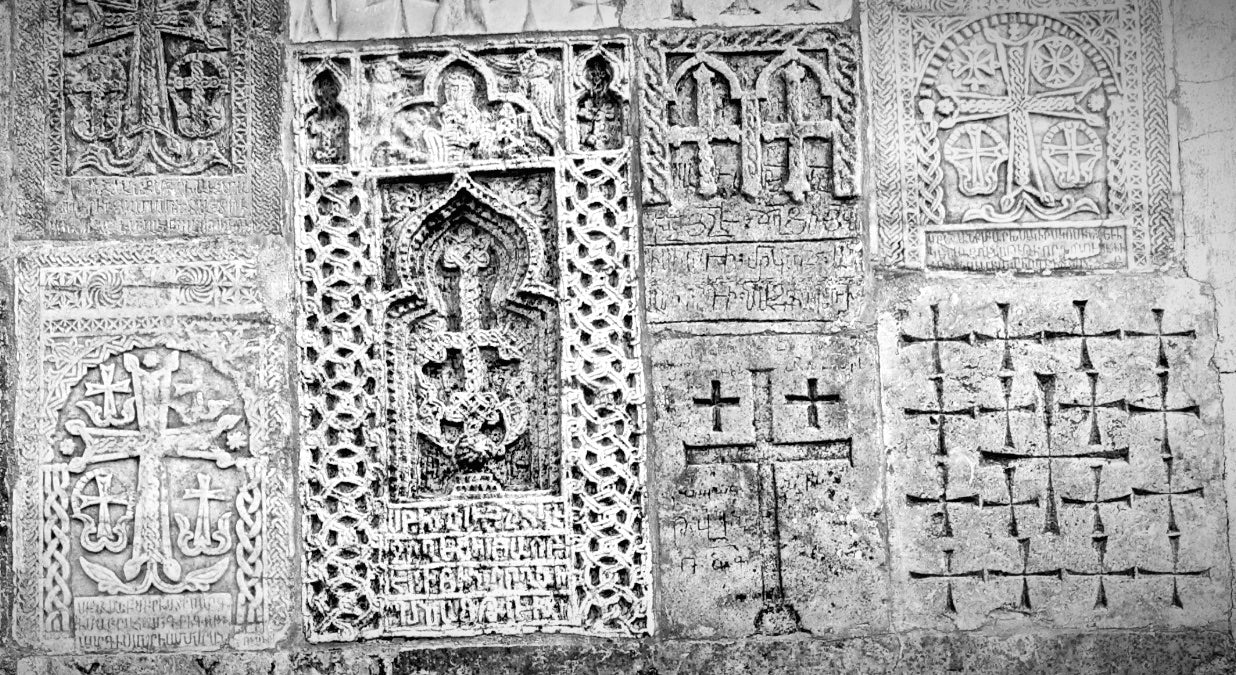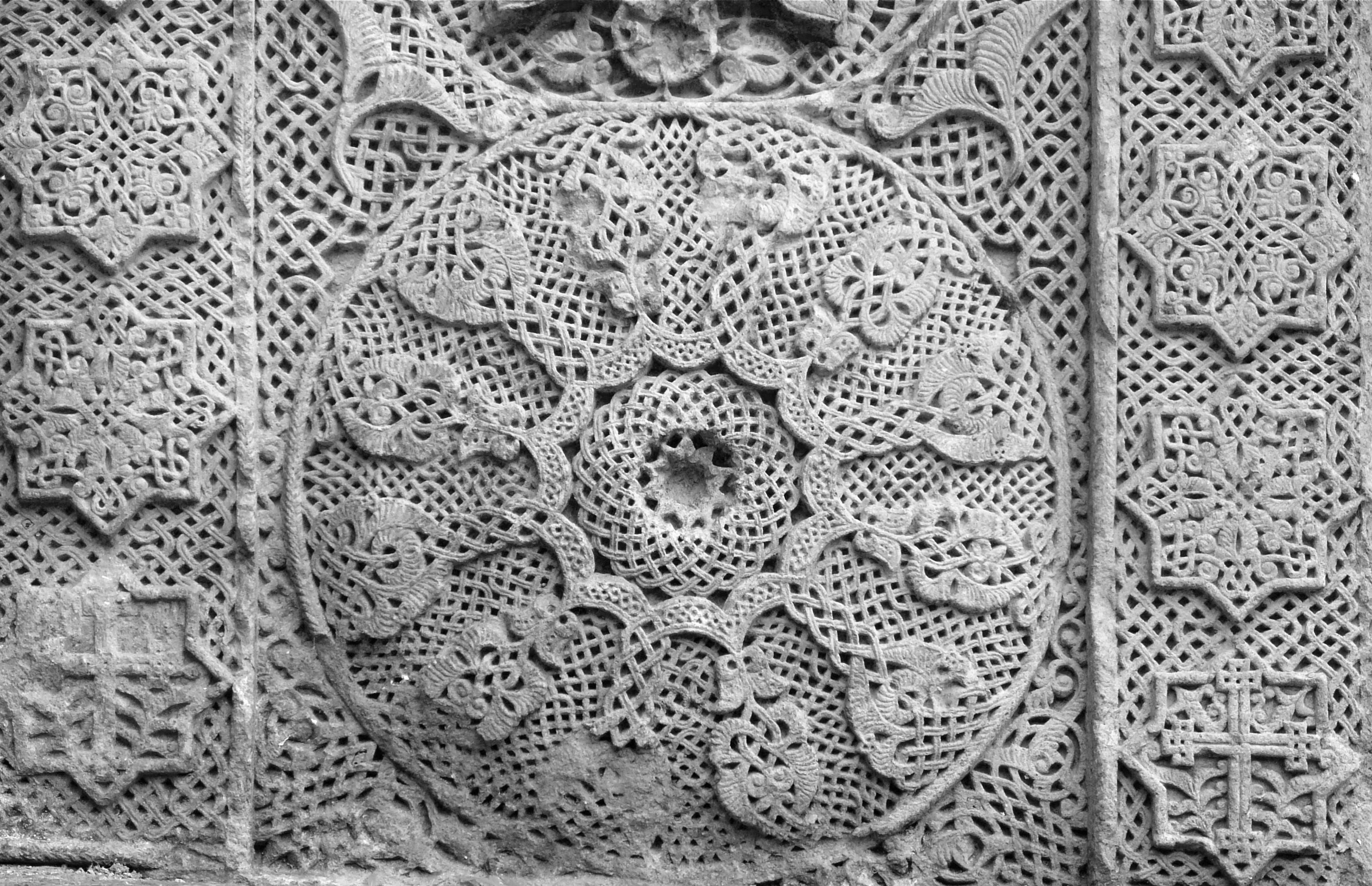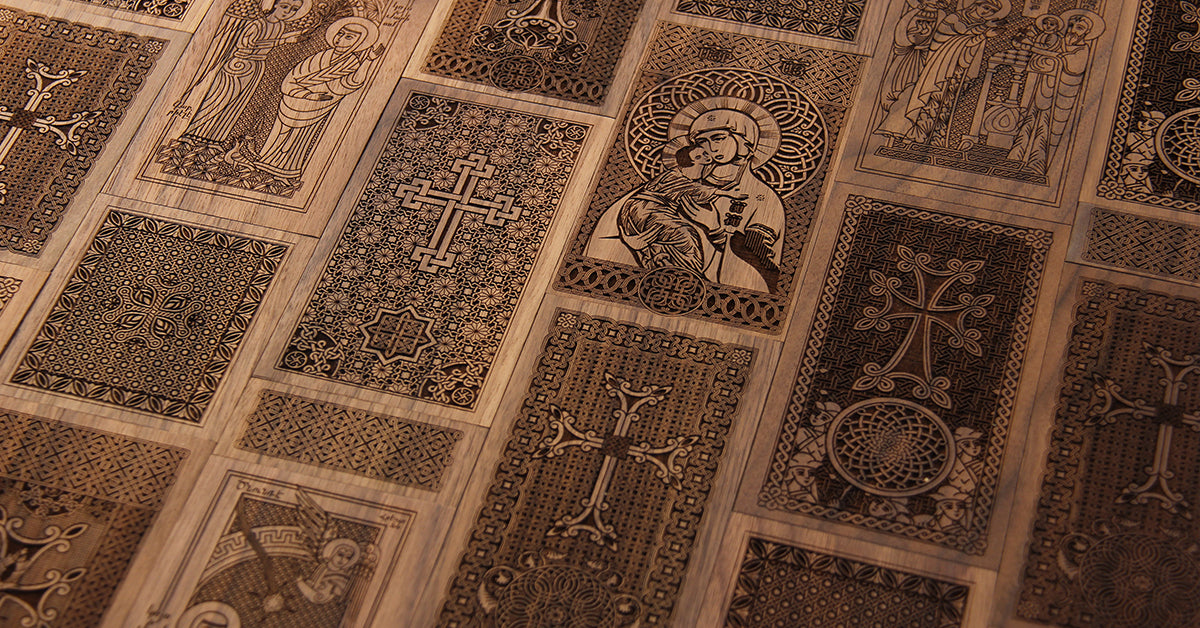The Majesty of the Khachkar

The Khachkar, or Cross-stone, is one of the most well-known Armenian symbols, and is a common element in Armenian architecture and sculpture to this day. A decorative cross is the central element, and below this is typically an elaborate solar disk.

These magnificent designs were carved into memorial steles and gravestones beginning around the 9th century A.D. Different motifs such as grapes, pomegranates, botanical patterns and biblical figures were often carved into the stele.
Khachkars are also commonly recognized by their intricate and wondrous interlacing.
The Cross-stone can have many meanings, but originally these impressive sculptures were carved to ensure the salvation of a person’s soul, and is intimately tied in with Armenian Christian beliefs. This is also why the design was used for gravestones, as it acted as a bridge between the human world and the divine. Religious figures often blessed the Khachkar and this was said to contribute to the sacred aura of the memorial. But aside from being strictly religious, the symbol was also believed to ward off natural disaster, and Khachkars were sometimes even constructed to celebrate a victory in battle.
While Khachkar carving reached its height between the 12th and 14th centuries, there has been somewhat of a revival in modern times, and there are still masters who are skilled at the art. The ancient techniques of craftsmanship are passed through family members or to an apprentice, which helps to keep the traditional methods alive. Every Khachkar is unique, and shows the individual style of the sculptor. There are about 40,000 Khachkars around the world today, mostly in Armenia.
These beautiful cross-stone sculptures were definitely a huge influence here at Gugoco, and you can find the symbol carved into many of our pieces. We wanted to bring the majesty of the Khachkar to a modern audience, so we carved the symbol in our own unique style. Still, we never lost the original essence of the ancient sculptures in Armenia. Ultimately, we hope to see this symbol influence the modern architectural world as well. As it was originally a prominent element in fortresses and other buildings, we think the intricate interlaced patterns of the Khachkar would make a beautiful contribution to urban design in the future.


